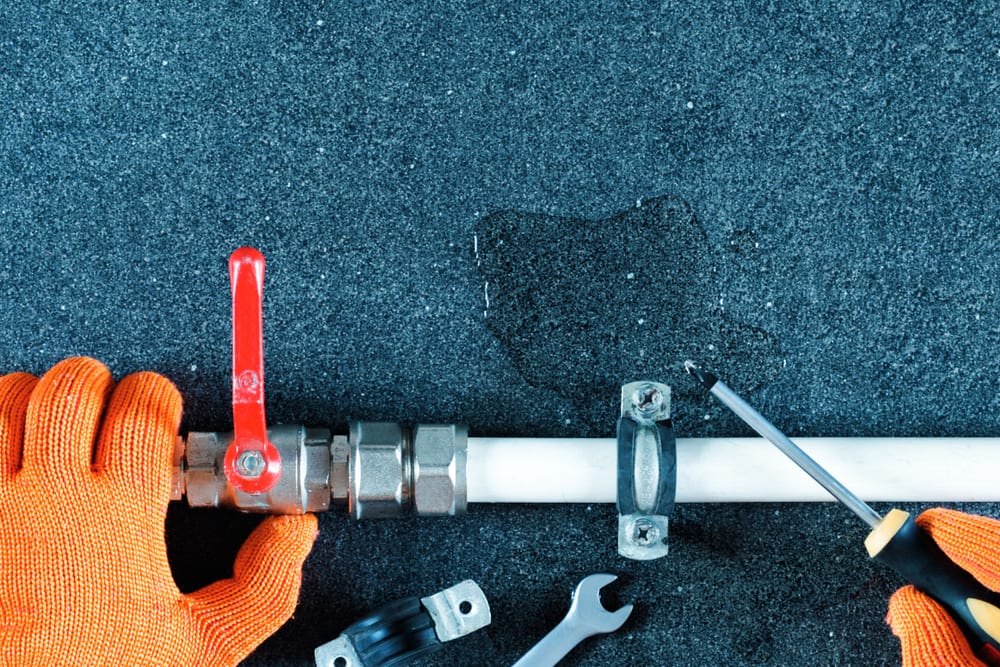Right here down the page you can find more amazing data concerning Top leak detection hacks.

Early detection of leaking water lines can mitigate a prospective calamity. Some small water leaks might not be noticeable.
1. Take A Look At the Water Meter
Every house has a water meter. Examining it is a surefire way that assists you find leaks. For starters, turn off all the water sources. Make sure nobody will certainly purge, utilize the tap, shower, run the cleaning equipment or dishwashing machine. From there, most likely to the meter and watch if it will alter. Since no one is utilizing it, there need to be no activities. That shows a fast-moving leakage if it relocates. Also, if you discover no changes, wait an hour or two as well as examine back once again. This suggests you may have a slow leak that could even be underground.
2. Check Water Intake
Evaluate your water costs as well as track your water consumption. As the one paying it, you need to observe if there are any kind of discrepancies. If you spot sudden changes, in spite of your consumption coinciding, it indicates that you have leaks in your plumbing system. Bear in mind, your water bill ought to fall under the very same array on a monthly basis. An unexpected spike in your bill suggests a fast-moving leak.
At the same time, a consistent boost each month, even with the very same practices, shows you have a slow leak that's also gradually escalating. Call a plumber to thoroughly inspect your residential or commercial property, specifically if you really feel a warm area on your flooring with piping beneath.
3. Do a Food Coloring Test
When it pertains to water consumption, 30% comes from bathrooms. Examination to see if they are running correctly. Drop specks of food shade in the storage tank and wait 10 mins. If the color somehow infiltrates your dish during that time without flushing, there's a leakage in between the storage tank and bowl.
4. Asses Exterior Lines
Do not fail to remember to check your exterior water lines as well. Must water permeate out of the connection, you have a loosened rubber gasket. One tiny leak can lose lots of water and also increase your water costs.
5. Evaluate the scenario as well as evaluate
Home owners need to make it a habit to check under the sink counters and also inside cupboards for any bad odor or mold and mildew development. These 2 warnings suggest a leak so prompt attention is needed. Doing regular evaluations, also bi-annually, can conserve you from a significant trouble.
Extra notably, if you know your house is currently old, keep a watchful eye on your heating units, hoses, pipes and so on. Look for discolorations as well as compromising as many devices as well as pipelines have a life span. They will certainly additionally naturally weaken because of wear and tear. Do not wait for it to rise if you presume dripping water lines in your plumbing system. Call a specialist plumber as soon as possible so you do not wind up with a terrible mess in your house.
Early detection of leaking water lines can minimize a potential disaster. Some small water leaks may not be visible. Examining it is a proven means that helps you uncover leakages. One tiny leakage can throw away heaps of water and spike your water costs.
If you presume dripping water lines in your plumbing system, do not wait for it to intensify.
WARNING SIGNS OF WATER LEAKAGE BEHIND THE WALL
PERSISTENT MUSTY ODORS
As water slowly drips from a leaky pipe inside the wall, flooring and sheetrock stay damp and develop an odor similar to wet cardboard. It generates a musty smell that can help you find hidden leaks.
MOLD IN UNUSUAL AREAS
Mold usually grows in wet areas like kitchens, baths and laundry rooms. If you spot the stuff on walls or baseboards in other rooms of the house, it’s a good indicator of undetected water leaks.
STAINS THAT GROW
When mold thrives around a leaky pipe, it sometimes takes hold on the inside surface of the affected wall. A growing stain on otherwise clean sheetrock is often your sign of a hidden plumbing problem.
PEELING OR BUBBLING WALLPAPER / PAINT
This clue is easy to miss in rooms that don’t get much use. When you see wallpaper separating along seams or paint bubbling or flaking off the wall, blame sheetrock that stays wet because of an undetected leak.
BUCKLED CEILINGS AND STAINED FLOORS
If ceilings or floors in bathrooms, kitchens or laundry areas develop structural problems, don’t rule out constant damp inside the walls. Wet sheetrock can affect adjacent framing, flooring and ceilings.
https://www.servicemasterbyzaba.com/blog/how-to-detect-water-leakage-in-walls/

As a keen reader about Leaking water lines, I think sharing that piece was mandatory. Appreciated our blog? Please share it. Let other people find it. Thanks for taking the time to read it.